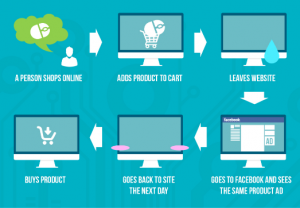
In recent years, brands have embraced Instagram with phenomenal success. The mobile photo sharing app now has more than 500 million active monthly users and it has firmly secured itself a place among the world’s most popular social networks. It is estimated that the business will bring in $ 3.2bn in 2016 – an impressive feat when considering the fact that it opened its advertising program less than a year ago. However, Instagram analytics are often overlooked compared to Facebook and Twitter.
Using social listening, brands can find out how successful their strategies are at the click of a button. Here’s an overview of the 7 metrics that every marketer should track for their brand’s Instagram account.
1. Likes
Tracking which of your posts are most liked is one of the most basic ways of measuring Instagram success, but it’s nonetheless helpful to know which of your posts were most popular so you can build on this for future campaigns.

2. Comments
Another simple indicator of post or campaign popularity is the number of comments it generated. Compared to likes, comments require more interaction and can be a stronger indicator of popularity. But as comments can also be negative, it’s important to analyse the quality as well as the quantity.

Sort posts by most comments over a specified time period and see which type generated the most response – and why. You can use this information to optimise your campaigns and see what your audience is most interested in.
3. Follower growth rate

Simply comparing the number of followers to those of your competitors doesn’t tell you much about your Instagram success. But tracking your follower growth rate can help when evaluating campaigns or if specific posts caused significant follower spikes.
4. Engagement rate
The engagement rate is not only a great way to see audience activity on different networks, you can also use it to compare your account’s performance to that of your competitors. It is made up of the likes and comments (engagements) divided by the number of the account’s followers. As it’s a relative indicator, you can compare page sizes with 10,000 or 100,000 followers and still get objective results.
This metric can also be a helpful indicator when comparing influencers’ accounts on Instagram.
5. Share of Voice
Tracking how often your brand and your competitors are mentioned gives you an idea of where you stand in relation to your direct competition. Looking at longer time spans, you can see how successful your campaigns are and dig deeper into your competitors’ activities.

6. Referral link
As Instagram doesn’t allow links in posts, brands only have the option to use the link in their bio to direct users to their page. A customized bit.ly link can be used for each individual campaign. This way brands can track how many people clicked on the link.
Along the same lines, brands can also create a specific Instagram coupon to track how many sales they generated through a campaign.
7. Hashtag mentions
You can use a campaign- or brand-specific hashtag as a metric to see how often the campaign or product got mentioned over a period of time. If you’re using an influencer to boost your product, hashtag tracking can be a way to determine how they have increased your reach and helps you evaluate the ROI for your influencer marketing.
Social listening helps you prove the value of your social marketing efforts
You should regularly check these metrics and compare your campaigns to boost your overall Instagram performance.
Digital & Social Articles on Business 2 Community
(19)
Report Post







